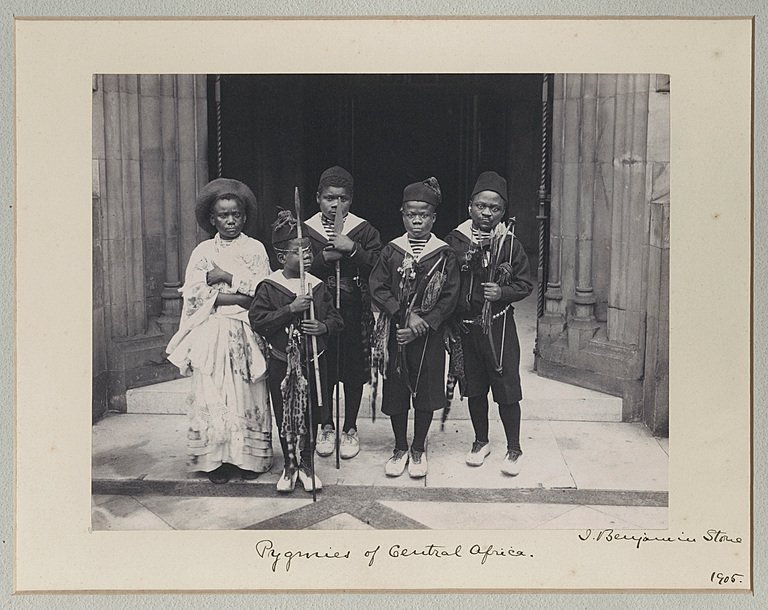
Exhibiting People In The 19th Century
By Sarah Longair
Displays of natural history, material culture and other specimens from across the world expanded rapidly in the nineteenth century, as museums were created across the country and objects collected across the growing empire by figures such as Harrison. Not all displays were of objects however. Throughout the century, people of various cultures and ethnicities from across the world were brought to Britain and displayed, subject to the gaze and curiosity of the British public. Sadiah Qureshi’s landmark Peoples on Parade (2011) is a detailed exploration of the experiences of these ‘living curiosities’.
Sara or Saartje Baartman was a Khoekhoe woman from South Africa, brought to Britain and put ‘on display’ in 1810, known as the ‘Hottentot Venus’ and regarded as ‘the first celebrity exhibit’ of the nineteenth century by Qureshi. She was later displayed in France and her body examined closely by anatomists. Her physique was the subject of fascination due to what were perceived to be her large breasts, buttocks and hypertrophied labia. Reports from the displays reveal that she disliked the audience’s attention, described by Zachary Macaulay as ‘evident signs of mortification and misery’[1]. She attempted to retain some control of her body throughout her life but died in poverty in 1815.
A mock Somali village of 70 people shipped over to perform in Edinburgh's Marine Gardens in 1909 (image: creative commons)
While Baartman’s experience is one of the most famous examples, her experience of being exhibited was reproduced for thousands of people throughout the nineteenth century. As Qureshi observes, throughout the century, ‘for a shilling or more, the public flocked to see Sámi, Krenak, Inuit, Anishinabe, Bakhoje, Zulus, San, Arabs, Pacific Islanders, Indigenous Australians, Indians, Japanese, Ndebele, Chinese and “Aztecs”’ [2]. They often performed songs, dances and other ceremonies, or were observed conducting their ‘daily lives’ in exhibition spaces. For the first half of the century, displays were often temporary with individuals or small groups, but from the Great Exhibition of 1851 onwards, international exhibitions and world fairs regularly displayed large groups and villages of people. In these exhibitions, they performed ceremonies, even re-enacting colonial wars. For example, the Savage South Africa show from 1899 staged an episode from the Matabele wars with British infantry and African performers. A remarkable surviving one-minute film gives us a sense of what such performances involved.
'African Pygmies in London' (including William Hoffman)
by Benjamin Stone© National Portrait Gallery London
Such ‘human zoos’ were commercially successful and hugely popular. Around the world they were viewed by millions of people. They reinforced ideas about human difference, objectifying the people on display and subjecting them to the gaze of the ogling public in Europe and the United States. While some were able to assert their own agency, for example settling in Britain afterwards, others were treated contemptibly, as the story of Ota Benga who was kidnapped from Congo and exhibited with monkeys in New York indicates. It is clear that given such an established history of humans and exhibitions, the arrival in Britain of the six Ituri 'pygmies', brought by Harrison, was a continuation of the trend. Learn more here about these six Africans and how they were presented as objects of curiosity at more than 35 venues between 1905 to 1907.
About the Author
Dr Sarah Longair is a Senior Lecturer in the History of Empire at the University of Lincoln. Her research examines the history of the British Empire in East Africa and the Indian Ocean world, through material culture and the history of collecting and museums.
References
Quoted in Qureshi, Peoples on Parade: Exhibitions, Empire and Anthropology in Nineteenth-Century Britain (University of Chicago Press: Chicago, 2011), p. 147.
Qureshi, p. 2.
